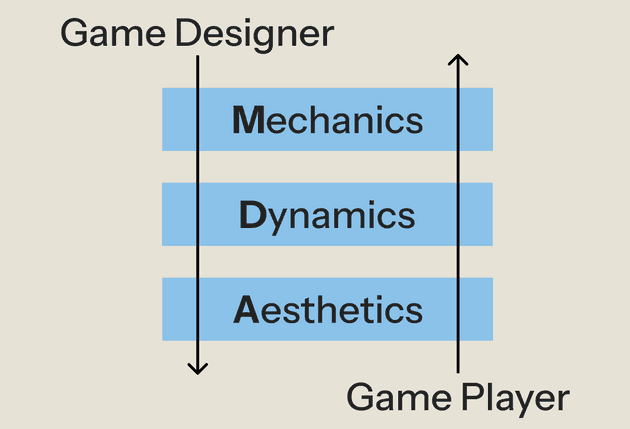The MDA framework breaks games into mechanics, dynamics, and aesthetics, showing how rules create behavior and behavior creates emotion. Designers and players view these components in opposite orders, so designers must work backwards to make the right experience for the players.
Paper: MDA: A Formal Approach to Game Design and Game Research
Why does a game designer's intention not always match the player's experience?
The MDA framework, short for Mechanics, Dynamics, and Aesthetics, is a systematic approach to examining games from different perspectives. It formalizes the understanding of games by breaking them into three linked components:
- Mechanics describe the particular components of the game at the level of data representation and algorithms. They are the rules, actions, and systems that define what players can do.
- Dynamics describe the run-time behavior that emerges from the mechanics acting on player inputs and each other's outputs over time. They are the patterns that arise when players act within the rules.
- Aesthetics describe the desirable emotional responses evoked in the player when they interact with the game system. Aesthetics represent the "fun" or emotional responses players feel, including excitement, challenge, fellowship, or discovery.
Take Monopoly as an example. Its mechanics include dice rolls, property buying, and trading. The dynamics involve luck, negotiation, and the accumulation of wealth. The aesthetics range from fun social play to frustration when one player dominates the game.
What makes the MDA framework powerful is that it accounts for both the designer's and the player's perspectives. Designers work forward, building mechanics to generate dynamics and then emotions. Players experience it in reverse. They first feel emotions, notice the dynamics, and only later perceive the underlying rules.
This gap explains why a designer's intention does not always match the player's experience. Therefore, to understand the player's experience, a designer must work backwards. For example, to maintain tension between players (Aesthetics) in Monopoly, the designer should work backwards to shift dynamics by adjusting mechanics, such as taxes or bonuses.
